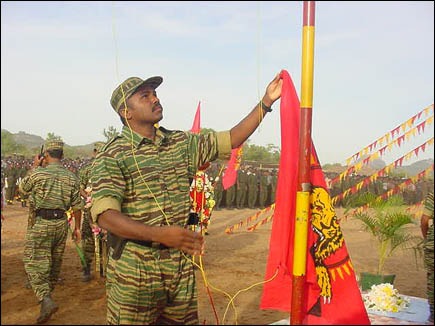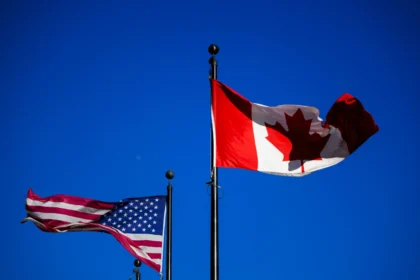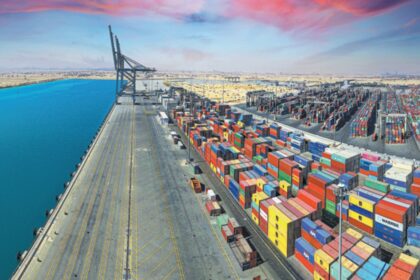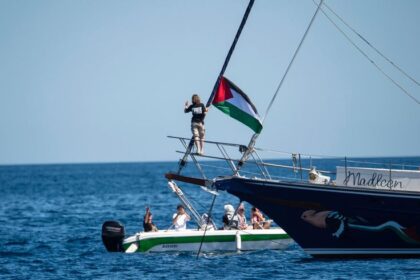When ethnic and religious divisions dominate politics, the result is often democracy suffering, and we see Sri Lanka as a prime example of this. The country endured a brutal 26-year civil war, which involved the Tamil separatist group Liberation Tigers of Tamil Eelam and a government that was majorly controlled by the Sinhalese Buddhists. This war was the reason Sri Lanka was pushed towards illiberalism.
Post-War Authoritarianism
After the conflict ended in 2009 with the government emerging victorious, the country was further moved into an authoritarian regime under the Rajapaksa rule. In 2015, democracy was briefly restored, but it was temporary, as later in 2019, Rajapaksa was elected as the Sri Lankan president. He was a hardline Sinhalese Buddhist nationalist and secured more than 52% of the vote. His party, known as the Sri Lanka People’s Front (SLPP), ruled over Parliament, and he made his brother, Mahinda, the prime minister. With both brothers in charge, Sri Lanka was once again moving towards authoritarianism while eroding the remaining liberal values.
Sinhalese Buddhist Nationalism
Sinhalese Buddhist nationalism is the heart of Sri Lanka’s political landscape. This ideology paints the country as a sacred Buddhist homeland, and the Sinhalese see themselves as the rightful protectors of the state. Since the 1950s, majoritarian politics have played a huge role in consolidating Sinhalese dominance. One of the ways this happened was by making Sinhala the sole official language. 70% of the Sri Lankan population is Sinhalese, so all of these constitutional practices have been imposed democratically.
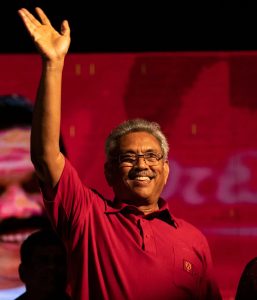
After the LTTE defeat, the government became more emboldened. Under Mahinda’s presidency, the government intensified military control over areas where the Tamil majority resides, aiming to promote an ethno-nationalist vision of Sri Lanka. The Muslim minority is also disproportionately targeted, as Buddhists often claimed Muslims to be threats, leading to hostility and violent attacks. With the brothers back in government, the concerns about authoritarianism have only grown. Gotabaya Rajapaksa, a former military officer with no parliamentary power, surrounded himself with nationalists and military figures, making him one of the most autocratic rulers Sri Lanka has ever seen.
Slogan and Policies of Fear
A key slogan of the Rajapaksa government, “One country, one law,” has fueled fear among minorities. This campaign includes efforts to repeal the Muslim Marriage and Divorce Act, which has drawn attention to more pressing controversial issues like child marriage. There were also proposals to ban cattle slaughter. This view aligns with Buddhist beliefs but would disproportionately harm the Muslim community, as they have a significant presence in the livestock industry. However, this policy aligns with Hindus and Tamils because they are mostly vegetarian. This creates a common ground between the minorities and the government, but at the expense of Muslim exclusion.
Economic Crisis
While nationalism dominates politics, Sri Lanka faces a severe economic crisis. The country heavily relies on tourism, textiles, and remittances from workers, particularly in the Middle East. However, ever since the Covid-19 pandemic, these sectors have led to a sharp drop in revenue. Adding to this crisis are the massive debts accumulated under the Rajapaksa government. Many infrastructure projects required a lot of money but failed to generate returns. One of the most notorious examples is the Hambantota deepwater port, which was built with Chinese loans but turned out to be such a big burden that it is now leased to China for the next 99 years. With over $50 billion in foreign debt and annual repayments of around $4 billion, Sri Lanka’s situation remains dire. Rajapaksa attempted to address the crisis by reducing imports and pushing for economic self-sufficiency, but all these measures fell short.
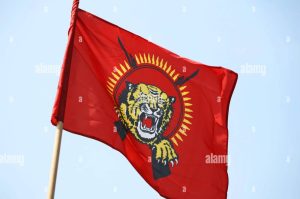
A Country at a Crossroads
Sri Lanka is at a crossroads. The country is struggling with fragile democracy while ethno-religious nationalism continues to drive politics. Another layer of uncertainty is added when you look at the crippling economic crisis and the undermined democratic institutions. The question remains: Can Sri Lanka break free from the cycle of nationalism and authoritarianism, or will democracy continue to erode under the weight of political and economic turmoil?






